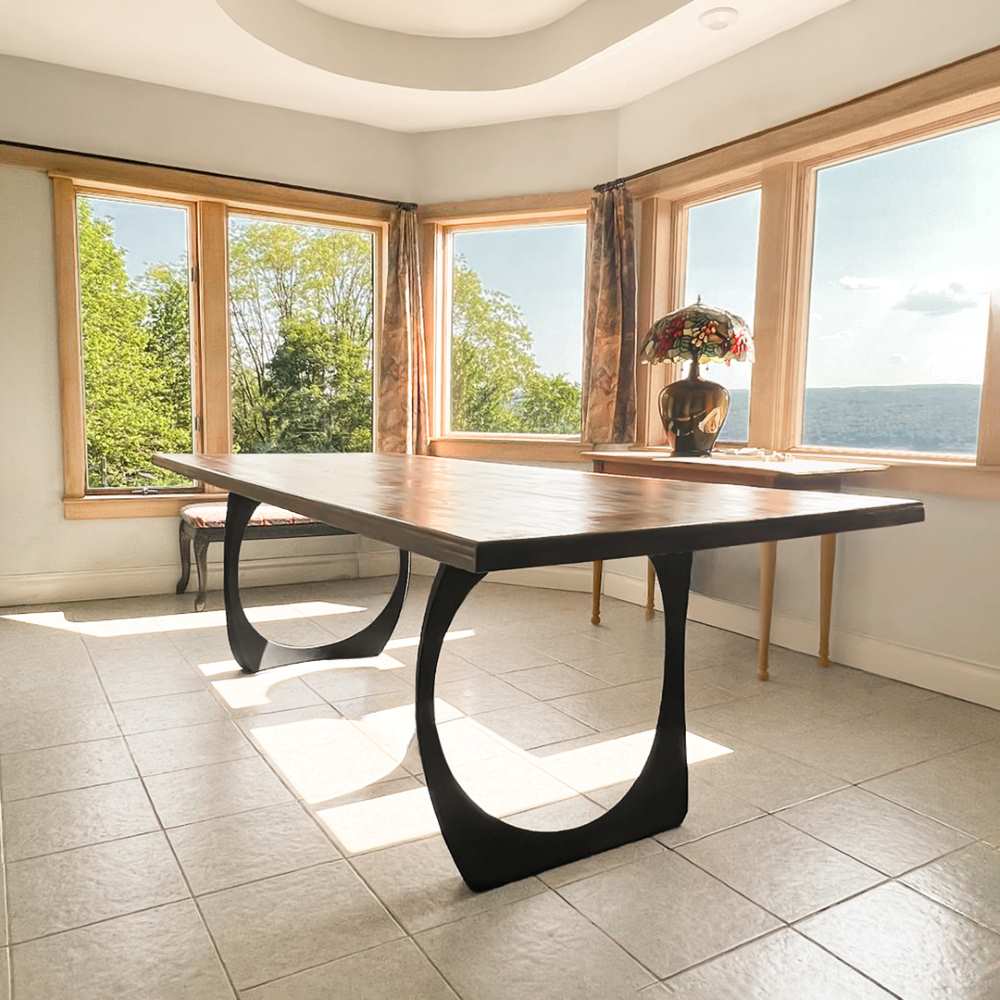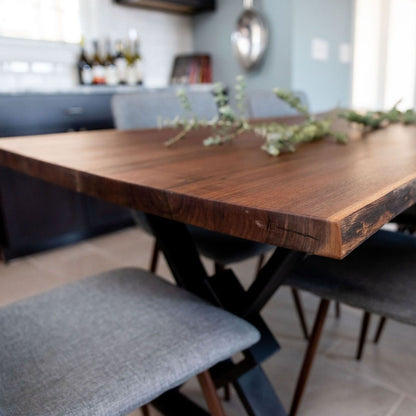How to Choose the Perfect Dining-room Table Legs for Your Home Décor
Choosing the excellent dining-room table legs is a nuanced procedure that requires mindful factor to consider of various aspects, including your area constraints, visual choices, and functional needs. The interplay between dimensions, designs, and materials can substantially influence the atmosphere of your dining area, making it necessary to approach this decision carefully. As you contemplate the myriad options offered, it comes to be clear that the best selection extends beyond mere appearance; it can boost your total eating experience. What elements should you focus on to guarantee your selection matches your home's special personality?
Assess Your Dining Space
Evaluating your dining room is important for picking the right table legs that complement both aesthetics and functionality. Begin by determining the measurements of your dining location, including ceiling elevation, floor area, and closeness to various other furnishings. This details will aid determine the appropriate dimension and height of your dining table, which straight affects the option of table legs.
Following, take into consideration the design and format of your dining area. An open-concept style might benefit from table legs that use aesthetic lightness, such as slender steel or acrylic options. Conversely, a much more conventional setup may call for sturdy wooden legs that supply a feeling of permanence.
Examine the existing color scheme and materials in your dining location. Integrating the table legs with these aspects develops a natural appearance that enhances the general decor.
Eventually, a comprehensive analysis of your dining room will guide you in making a notified choice, making sure that your table legs not just enhance the aesthetic appeal yet also offer practical objectives.
Consider Your Design Preferences
When picking eating area table legs, it is crucial to review your individual design preferences, as they significantly affect the general aesthetic of your eating area. Your choice of table legs can either enhance or comparison with existing design, making it crucial to straighten them with your recommended indoor layout motif.
If your home leans towards a modern aesthetic, think about streamlined steel or minimalist wood legs that provide a tidy, minimalist look. For a more conventional technique, ornate wooden legs with elaborate makings can add a touch of style and class. Industrial designs gain from robust, raw products such as reclaimed timber and steel combinations, mirroring a sturdy appeal.
Furthermore, farmhouse and rustic designs often prefer tough, beefy legs that stimulate a feeling of warmth and convenience. On the other hand, if your décor is diverse, you could pick unusual shapes or a mix of products to create visual passion.

Evaluate Product Options
The choice of material for dining area table legs plays an essential role in both durability and aesthetic allure. Common products include wood, metal, and composite choices, each offering distinctive qualities that can affect the general appearance and longevity of your table.
Wood is a timeless selection, known for its warmth and versatility. Hardwoods like oak and walnut give phenomenal strength and can be completed in various discolorations to match any type of decoration. Nevertheless, softwoods like ache are much more susceptible to damages and scratches, making them much less ideal for high-traffic areas.
Steel legs, often crafted from steel or light weight aluminum, radiate modernity and industrial see appeal. They are very long lasting and resistant to put on, making them appropriate for family members with kids or regular celebrations (dining room table legs). Additionally, metal can be completed in numerous colors, improving the personalization opportunities
Composite products, such as MDF or laminate, offer price and diverse designs. While generally less durable than strong wood or steel, they can still give a fashionable appearance and are often simple to keep.
Inevitably, the material you choose need to line up with your way of life, aesthetic choices, and the degree of use your dining table will experience.
Determine Elevation and Size
Choosing the suitable elevation and size for your eating space table is vital for both capability and convenience. The standard height for eating tables normally varies from 28 to 30 inches, enabling sufficient legroom for the majority of individuals when seated. Nevertheless, it is crucial to take into consideration the measurements of your dining room and the kinds of chairs you intend to utilize.

In addition, consider the percentages of your dining space. A larger table in a large area can develop a grand ambiance, while a smaller sized table works well in even more intimate setups. Inevitably, the appropriate elevation and size will integrate with your general decor and boost the eating experience for you and your guests.
Explore Customization Possibilities

Furthermore, the design of the legs can be customized to fit various styles, such as rustic, contemporary, or industrial. Conical legs can stimulate a mid-century modern feeling, while chunky, block-style legs might reverberate with traditional or farmhouse decor.
House owners can also discover shade finishes, from all-natural timber spots to paint, enabling them to match or contrast with the tabletop and surrounding decoration.
Furthermore, leg height can be readjusted to accommodate particular seating setups or personal preferences, boosting both convenience and performance.
Last but not least, one-of-a-kind decorations, such as carvings or attractive braces, can better personalize the table legs, making the dining experience not simply a statement but a dish item in the home. By considering these customization Continue alternatives, house owners can create a dining room table that absolutely shows their originality.
Final Thought
Choosing the ideal dining-room table legs requires mindful consideration of numerous variables, including the dimensions of the eating space, style choices, product sturdiness, and wanted elevation. Personalization alternatives further improve the ability to accomplish a natural visual that matches the general decoration. By methodically evaluating these elements, home owners can make certain that the selected table legs not only accomplish functional demands but also add favorably to the dining experience and ambiance of the home.
Choosing the suitable dining space table legs is a nuanced procedure that requires mindful consideration of various aspects, including your area constraints, aesthetic choices, and sensible needs.Analyzing your eating space is essential for picking the right table legs that match both looks and capability.When establishing dimension, determine the area where the table will certainly be positioned to ensure it fits easily, allowing for at the very least 36 inches of clearance around the table for very easy movement. A larger table in a roomy location can create a grand setting, while a smaller sized table works well in even more intimate setups.Picking the optimal eating room table legs requires careful factor to consider of various aspects, including the measurements of the eating space, style choices, material durability, and desired height.